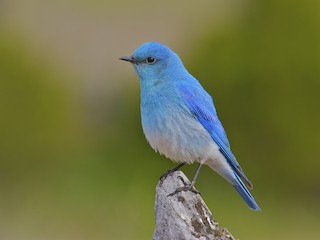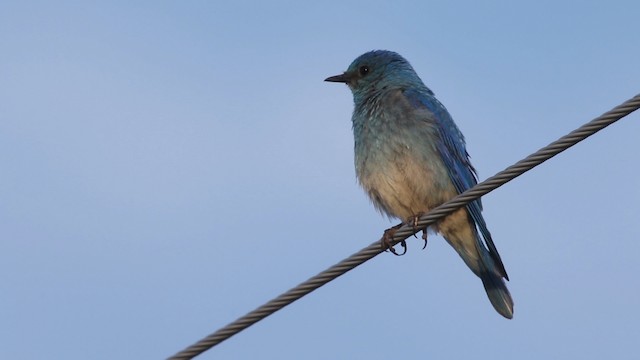Mountain Bluebird Sialia currucoides Scientific name definitions
- LC Least Concern
- Names (23)
- Monotypic
L. Scott Johnson and Russell D. Dawson
Version: 1.0 — Published March 4, 2020
Text last updated May 3, 2019
Text last updated May 3, 2019
Sign in to see your badges
Species names in all available languages
| Language | Common name |
|---|---|
| Bulgarian | Планински син дрозд |
| Catalan | siàlia muntanyenca |
| Croatian | gorska modrorepka |
| Dutch | Bergsialia |
| English | Mountain Bluebird |
| English (United States) | Mountain Bluebird |
| Estonian | mägi-sinilind |
| French | Merlebleu azuré |
| French (Canada) | Merlebleu azuré |
| German | Berghüttensänger |
| Icelandic | Fjallaskotta |
| Japanese | ムジルリツグミ |
| Norwegian | fjellblåfugl |
| Polish | błękitnik górski |
| Russian | Голубая сиалия |
| Serbian | Planinska plavica |
| Slovak | salašník horský |
| Spanish | Azulejo Claro |
| Spanish (Mexico) | Azulejo Pálido |
| Spanish (Spain) | Azulejo claro |
| Swedish | bergsialia |
| Turkish | Dağ Mavi Ardıcı |
| Ukrainian | Блакитник середній |
Sialia currucoides (Bechstein, 1798)
PROTONYM:
Motacilla s. Sylvia Currucoides
Bechstein, 1798. Johann Lathams allgemeine Uebersicht der Vögel aus dem Englischen übersetzt und mit Anmerkungen und Zusätzen versehen 3, p.546 pl.121.
TYPE LOCALITY:
Virginien [= western America].
SOURCE:
Avibase, 2024
Definitions
- SIALIA
- currucoides
The Key to Scientific Names
Legend Overview
UPPERCASE: current genus
Uppercase first letter: generic synonym
● and ● See: generic homonyms
lowercase: species and subspecies
●: early names, variants, misspellings
‡: extinct
†: type species
Gr.: ancient Greek
L.: Latin
<: derived from
syn: synonym of
/: separates historical and modern geographic names
ex: based on
TL: type locality
OD: original diagnosis (genus) or original description (species)

- Year-round
- Migration
- Breeding
- Non-Breeding
Figure 1. Distribution of the Mountain Bluebird.
Note that in areas where the species is shown as occurring year-round, individuals are found locally at the higher elevations from very early spring through summer and into early fall, and in the lowlands during the rest of fall and the winter. Note also that the distribution of the species in the non-breeding season is poorly described and is known to vary substantially from year to year.

















































